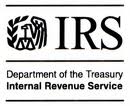5% (or more) of the composition of the trucking industry in America are women. For the convenient advantages in the industry or for any other reason, more and more women are stepping to run the wheels each year. People who say ‘trucking is not where women land up for it is too rough and stressful for them’, are considered mere ignorant of today’s world. Women have been in trucking from as long as there have been trucks. Lillie Elizabeth Drennan, apart from being the first lady to be Commercial driver licensed in 1929, was also the first ever woman to take ownership of trucking business. She operated her business successfully for nearly 24 years despite long routes, rough roads and stress from the opposition. Her legacy has inspired many, especially women, to follow her steps into trucking industry to take forward driving as a career.
Women share the dreams and difficulties of the roads as far as driving trucks is concerned and the industry wouldn’t be running the same way without these dedicated women of wheels. Tax2290 salutes all women drivers for their courage, patience and power that they possess to run the wheels on roads. As owners, they now can file form 2290 for their heavy truck’s heavy vehicle use tax online, so fast and safely. It doesn’t take much time to fill in the IRS form 2290 requisite details and the filers would be returned with Schedule 1 copy within minutes.
Women in Trucking has been working towards the encouragement of employment of women in the trucking industry, promotion of their accomplishments and minimization of obstacles faced by these women. They have been actively working for the motivation of the transportation industry and their women-related activities chiefly. Tax2290 is a proud member of the Women In Trucking Association extending our support to help them provide the necessary resources to encourage women having goals inclined towards the trucking industry. We also heartily congratulate Ellen Voie, President/CEO and founder of the Women In Trucking Association, who has been honored by the White House in “ordinary Americans doing extraordinary things” through its “Champions of Change” initiative on Aug 6th, 2012. There’s another date of high cardinality to truck owners, 31st August, 2012, which is the last date to file HVUT tax returns.For more information on due date extension due to Labor Day weekend IRS shut down, click here.




